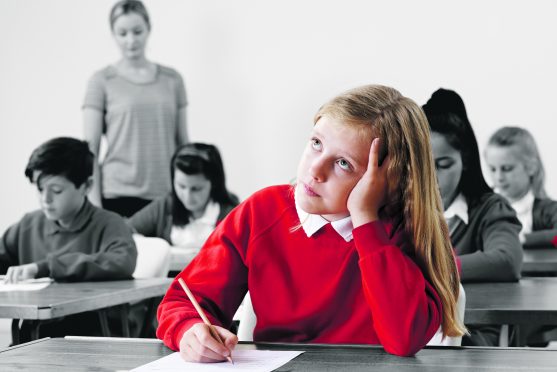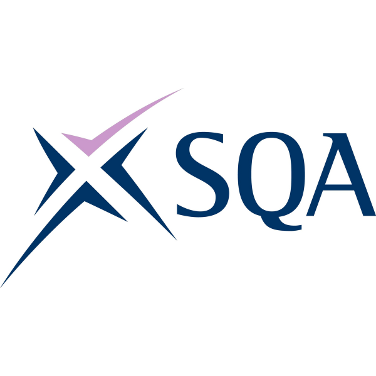
Teachers need more skills and guidance on how to help children who are struggling to read, academics behind a new nationwide survey say.
Information collected on reading and writing for all pupils in the stages of P1, P4, P7 and S3 by the Scottish Government found that one in three Scottish children are struggling to learn to read in schools.
Last week one teacher posted an anonymous article in an education newsletter in which they warned that many pupils are leaving secondary school “functionally illiterate” despite some having an A pass in English.
Now academics from the Universities of Dundee and Glasgow are to carry out a nationwide study to establish what needs to be done to better equip teachers to tackle the problem.
Lead researcher Dr Jennifer Milne, of the University of Dundee, said they will be contacting teachers to “document their real experiences of literacy practice”.
She said: “No-one can think this is acceptable that one in three children and young people in Scotland are struggling with reading. Teachers are working harder than ever, with more demands and stress, and less time for professional development and training than ever.
“We are carrying out the research so we can actually hear from teachers and document their real experiences of literacy practice. Through the research, we can highlight where there is good practice and where resources and training need to be focused.”
Study aims to ‘bridge the gap’
Another academic involved in the study is Dr Jeremy Law of the University of Glasgow.
He said: “Many educators face challenges in addressing the specific needs of struggling readers, primarily due to a lack of access to research-informed reading instruction methods.
“It’s crucial, therefore, that we provide teachers with comprehensive professional development in these areas, equipping them with both the knowledge and tools to effectively support every student’s reading journey.
“Our study aims to bridge this gap. By evaluating current literacy teaching practices in Scottish schools, we seek to pinpoint both the strengths and weaknesses in how reading instruction is delivered.”
Claire Telfer, Head of Scotland at Save the Children, said that more focus has to be made beyond the classroom to tackle the attainment gap.
She said: “To meaningfully tackle the attainment gap, we need to focus before and beyond the classroom – including supporting families to engage in their children’s learning and development at home.”
Anne Glennie, a former teacher, said during her time teaching, she often encountered children who struggled with literacy and said the approach to children reading in the classroom has to change.
She believes that a teaching method known as systematic synthetic phonics should replace the current which will allow children to read and write quicker.
She said: “It has been painfully obvious for some time that change is required. Schools and teachers are working hard, under difficult circumstances, but if you’re working hard at the wrong things and pouring effort, money and energy into the wrong approaches and interventions, then you simply won’t get the results.
“Every child in Scotland has the right to be taught to read using the best, most effective, evidence-based methods. It’s the greatest scandal of Scottish education and it’s hiding in plain sight. It is unforgivable that it has blighted the lives of so many children and young people.”
‘Reading opens up the world’
Children in Scotland, the umbrella group for organisations working for children across Scotland, said everyone involved in a child’s life needs to have an understanding of the importance of reading in and outside of the classroom.
Billy Anderson, Director of Services, said: “Reading is so important in every aspect of life. Although various technologies can now assist with this, there is a link between self-efficacy and self-esteem. Reading opens up the world to children and starts to form the vital building blocks of confidence and autonomy that are important for good mental health, motivation and aspiration.”
EIS assistant Secretary Anne Keenan, said: “Teachers across Scotland are witness to the profound impact which rampant poverty, austerity and the pandemic have had on children and young people.
“Members in early years have reported an increase in the number of children presenting with delayed development or with minimal speech and language acquisition on arriving in Primary 1, whilst members supporting older children and young people attest to the mental health challenges which they face and for which there is insufficient immediate or timely support.”
The Scottish Government said that Education Scotland is continuing to develop guidance on early reading.
They said: “Schools and local authorities are responsible for delivering education and they should tailor provision to best meet local needs and circumstances.”
Teacher: Pupils leave secondary ‘functionally illiterate’
Many pupils are leaving Scottish secondary school “functionally illiterate” despite some having an A pass in English, it has been claimed.
A teacher working in a school north of the border has blown the whistle about what they describe as “the collapsing standards in English among students”.
The teacher is part of the Scottish Union for Education (Sue) group, which campaigns for a “common-sense approach to education”.
In an anonymous article for the Sue newsletter published on Substack, the teacher insisted the SNP Government had set the bar so low it was “very difficult indeed to leave school without a pass” in English. The teacher said: “I mark for the National 5 and Higher English papers for the Scottish Qualifications Authority and writing, we are instructed, should not be marked down so long as it ‘makes sense at first reading’.
“Incorrect spelling, missing punctuation, including full stops, and flawed grammar should not detract from the mark.”

According to the teacher, this has created “boom time for high pass rates and bust for standards”. They added: “For this year’s National 5 English course, a mark of 37% secured a D grade – now considered a pass.
“Teachers now live down to these low standards. The habit amongst English teachers is to teach an easy poem for the critical essay section of the exam, which is worth another 20% of the overall mark.
“Many students are leaving school functionally illiterate and some of them have an A in English.”
The SQA said the claims were “untrue and not backed by evidence”.
It said: “Marking instructions have clear guidelines on technical accuracy and our 2023 course report noted that the standard of written English was generally high. Pass rates in English have also remained stable, pre and post-pandemic, with national standards being applied.”
According to the SQA, marking instructions give markers clear guidelines on technical accuracy, including spelling, grammar, sentence construction, punctuation, and paragraphing.”
The Scottish Government said: “Scotland’s school education system is performing well and we have recently seen the biggest ever reduction in the attainment gap on literacy and numeracy in primary schools in a single year.
“The 2023 exam results also show that the gap between attainment levels in the least and most deprived areas is narrower than it was in 2019 across National 5s, Highers and Advanced Highers.
“But we are determined to improve further, which is why we are implementing further reforms.”

Enjoy the convenience of having The Sunday Post delivered as a digital ePaper straight to your smartphone, tablet or computer.
Subscribe for only £5.49 a month and enjoy all the benefits of the printed paper as a digital replica.
Subscribe